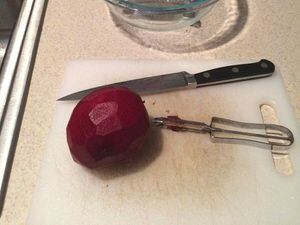How to ‘beet’ Alzheimer’s: Red vegetable points the way
Compound in beetroot may help scientists protect brain neurons.

A vegetable compound in beetroot could provide new treatments for Alzheimer’s disease, new research suggests.
In tests betanin, which gives beetroot its distinctive red colour, suppressed chemical changes linked to the death of neurons.
Lead scientist Professor Li-June Ming, from the University of South Florida, US, said: “Our data suggest that betanin, a compound in beet extract, shows some promise as an inhibitor of certain chemical reactions in the brain that are involved in the progression of Alzheimer’s disease.
“This is just a first step, but we hope that our findings will encourage other scientists to look for structures similar to betanin that could be used to synthesise drugs that could make life a bit easier for those who suffer from this disease.”
A key hallmark of Alzheimer’s found in the brains of sufferers is sticky deposits of a protein building block, or peptide, called beta-amyloid.
When the peptide becomes attached to metals such as iron or copper it misfolds and binds together in clumps, said Prof Ming.
This in turn promotes inflammation and oxidation, leading to the “rusting” and death of nerve cells.
In the laboratory, betanin added to a copper-bound beta-amyloid mixture reduced a measure of oxidation by 90%.
The dramatic result suggested that misfolding of the peptide was being suppressed.
Co-author Darrell Cerrato, also from the University of South Florida, said: “We can’t say that betanin stops the misfolding completely, but we can say that it reduces oxidation.
“Less oxidation could prevent misfolding to a certain degree, perhaps even to the point that it slows the aggregation of beta-amyloid peptides, which is believed to be the ultimate cause of Alzheimer’s.”
The findings were presented at the 255th national meeting of the American Chemical society in New Orleans.





